Did you know that skin cancer is not only the most common type of cancer in the United States but also the most common type of cancer worldwide? When it comes to understanding skin cancer, it can be a little bit overwhelming and kind of confusing. So today, I am breaking down skin cancer for you so you can understand it better.
We’re here to help you understand your skin and find products that work for you.
We wanted to make this blog post, not only to raise awareness about skin cancer but also to serve as a resource if you’ve been diagnosed with skin cancer or have a loved one that’s been diagnosed. The concept of cancer can be scary and overwhelming, and sometimes having a little more information can be really helpful. We’ll be discussing the causes of skin cancer, how to prevent it, how to identify skin cancer on your skin, as well as treatments.
Disclaimer: In the name of full transparency, please note that this post contains affiliate links and any purchase made through such links will result in a small commission for us.
What is Skin Cancer?
Very generally speaking, skin cancer refers to the abnormal growth of cells within your skin, and there are different types of skin cancer based on which type of skin cell within your skin is misbehaving. Today, I’m really going to focus on the three most common types of skin cancer because that’s what dermatologists see in their clinic on a day-to-day basis, and they’re things you can really keep an eye out for at home. These include:
- Basal Cell Carcinoma (also known as Basal Cell Skin Cancer)
- Squamous Cell Carcinoma (also known as Squamous Cell Skin Cancer)
- Melanoma
Basal Cell Carcinoma
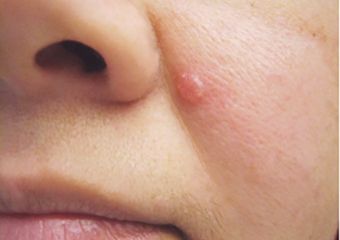
I’m going to start out by talking about Basal Cell Carcinoma. This is the most common type of skin cancer; in fact, one in five Americans will get diagnosed with a Basal Cell Carcinoma in their lifetime. Basal Cell Carcinomas really show up in skin that has chronically been exposed to the sun. Instead of looking like that dark, changing pigmented growth that a lot of us think about when we think of traditional skin cancer, Basal Cell Carcinomas tend to look like pink bumps or pink scaly patches.
Sometimes they’re just a little area that looks like it’s bleeding or not healing for a while, so they can be really subtle.
The good news about Basal Cell Carcinoma is that it is really not an invasive skin cancer. It does not tend to move to lymph nodes or other organs, and it doesn’t affect someone’s life expectancy. If someone is diagnosed with a Basal Cell Carcinoma, it does need to be fully removed from the skin, and we’ll talk about ways we do that later on in this blog post. If you leave a Basal Cell Carcinoma in place, it will continue to grow in place and destroy the surrounding tissue. So the earlier you catch these, the less tissue you need to remove to cure someone of their Basal Cell Skin Cancer. That’s really true of all types of skin cancer: the earlier they’re detected, the easier they are to cure.
Squamous Cell Carcinoma
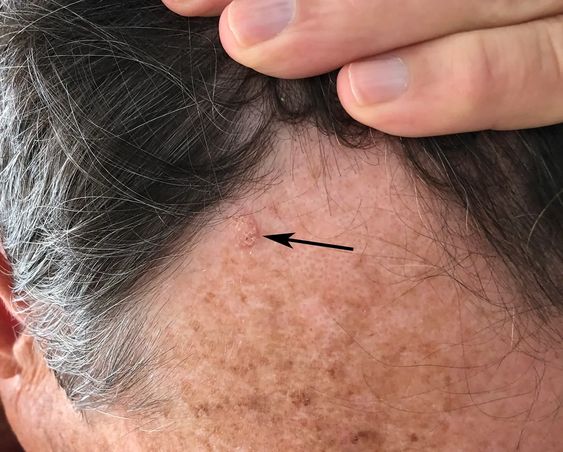
The second most common type of skin cancer is Squamous Cell Carcinoma. Very similar to Basal Cell Carcinoma, it tends to show up in areas that have been chronically exposed to the sun. Some types of Squamous Cell Carcinoma are also associated with HPV, or the human papillomavirus—that’s the virus that causes warts. So you can get Squamous Cell Carcinomas in places the sun does not shine, like on the fingernails, in the genitals, and inside the mouth.
The vast majority of Squamous Cell Carcinomas are detected when they are small, and if they are removed early, they don’t really have the potential to cause long-term problems. However, large Squamous Cell Carcinomas—those that are bigger than two centimeters or ones that are penetrating deep or are attached to an underlying nerve in the skin—do have the potential to metastasize. They can move to lymph nodes and organs, and people can die of metastatic Squamous Cell Carcinoma.
Melanoma
The third and final type of skin cancer I’m going to discuss in this video is Melanoma. Melanoma accounts for about 1% of all skin cancers diagnosed in the United States. Melanomas originate from the melanocyte, which is the pigment-producing cell within our skin. Which is why most melanomas are dark brown or black; however, you can have pink melanomas too.
It’s thought that about a third of melanomas come from a pre-existing mole, meaning you have a mole on your skin that’s been fine for many years, and then it begins to change and that is a sign that it may have developed into a melanoma. But the majority of melanomas come out of nowhere; they just start growing, and they are a melanoma from the start.
Although excessive sun exposure is a very big risk factor for developing melanoma, people who don’t have a lot of sun exposure can also get melanomas. That’s because melanoma has a strong genetic component.
One thing a lot of people don’t know about melanoma is that it doesn’t just develop on the skin. You can get melanoma in the eye, in the urinary tract, in the vagina, and in the GI tract as well. In men, the most common place that you’ll see a melanoma is on the upper back, but in women, it’s on the lower legs, and it is why it is so important to do a full-body skin exam of yourself periodically to look for new or changing growths.
Melanoma can develop on people with any skin tone, but those with darker skin don’t tend to develop sun-induced melanomas. But they can still get melanoma, and they tend to be on the palms, on the soles, and involving the nail. A lot of people don’t know this, but Bob Marley actually died of metastatic melanoma that started on his foot.
This brings us to our next point, which is that melanoma has the potential to be a very deadly skin cancer. There are different subtypes of melanoma, and the ones that have the best prognosis are the ones that are very thin, meaning that they only involve the very top layer of the skin. The deeper the melanoma is at the time of diagnosis, the higher the chance that it has metastasized to lymph nodes or other organs, and the higher the chance of death.
If a melanoma is detected really early and it hasn’t penetrated deeply into the skin, it just needs to be removed. Similar to a Squamous Cell Carcinoma or a Basal Cell Carcinoma, once it’s excised from the skin, the chance that that melanoma causes problems down the road is very, very low. If however the melanoma is deep at the time of diagnosis, then usually additional testing needs to be done. Oftentimes, the lymph nodes are evaluated to make sure that the melanoma has not spread.
Diagnosing Melanoma: The ABCDEs
When dermatologists teach their patients about what to look for when diagnosing melanoma, they often talk about the ABCD and Es of melanoma:
- A stands for Asymmetry, meaning that if you are looking at a growth on your skin and both sides or both halves of the growth don’t match, it is asymmetrical.
- B stands for Border, and this can mean a few different things. One is an uneven or irregular border, or a border that is very well or sharply demarcated on one side and tends to look a little fuzzy in other places. So if the border is not consistent, that can be a sign of a melanoma.
- C stands for Color, and you’re really looking for two or more colors within a growth. Melanomas can be brown, black, pink, white, blue, or gray.
- D stands for Diameter, and you’re really looking for a growth that has a diameter larger than six millimeters, or the size of a pencil eraser. This doesn’t mean that any mole that’s larger than six millimeters is going to be a problem. In fact, the vast majority of growths on your skin that are larger than six millimeters are not going to be a skin cancer. But six millimeters is really where we start getting concerned. That being said, you also can have melanomas that are only one or two millimeters in size, which is why diameter is not the only criteria we’re looking at.
- E stands for Evolving, so look for a mole that is changing.
Risk Factors
Next, let’s talk about the risk factors for developing skin cancer. Having fair skin and having the inability to tan absolutely puts you at higher risk. So if you’re one of those people that starts with pale skin and goes to sunburn and then back to pale without any bronzing or browning of the skin, you are definitely at higher risk of developing skin cancer. Also, people with red or blonde hair, or people who have light-colored eyes, like green or blue eyes, are also at higher risk.
Excessive sun exposure, of course, is a risk factor for skin cancer, and this doesn’t just mean sunburns, although sunburns are a risk factor. Chronic, low-grade sun exposure over long periods of time. If you grew up in a sunny climate, played lots of outdoor sports, had a job like farming, worked in agriculture, or were a pilot, or you used tanning beds, all of those things can increase your risk of skin cancer too.
Other external factors can also increase your risk of skin cancer. For instance, if you are on immunosuppressive medications, you can have a higher risk of developing squamous cell carcinoma. Also if you have a history of radiation or arsenic exposure, that can also increase your risk.
When it comes to melanoma skin cancer specifically, having over 50 moles, many atypical-looking moles, or many large moles on your skin, or a family history of melanoma, will all increase your risk of developing melanoma.
Controllable Risk Factors
Now, if you’re reflecting on that list of risk factors and thinking, “I don’t really have a lot of control over a lot of those things,” you’re totally right. The main thing that you can control when it comes to preventing skin cancer is your history of sun exposure. And we don’t want you living in fear of the sun, we want you to be able to enjoy outdoor activities and enjoy your life, but just have a healthy respect for what the sun can do.
Prevention
So let’s talk a little bit about prevention:
- Limit Midday Sun Exposure: If there is an activity that you can do outside the hours of 10 a.m. to 4 p.m., that’s great because 10 a.m. to 4 p.m. is when the sun’s rays are the most intense, and you have the highest UV exposure.
- Wear Sunscreen Every Day: Try to get in the habit of wearing sunscreen every day. This really limits your chronic, low-grade sun exposure. And in case you’ve heard somewhere on social media that sunscreen causes skin cancer, just put that thought out of your head—there is literally no data to show that sunscreen causes skin cancer. That’s like saying flossing causes cavities; not only is it totally false, it’s literally the opposite of the truth.
- Use Sun-Protective Clothing: I know sometimes it can be hard to wear sunscreen, or reapplication isn’t really feasible, or it’s annoying, and that’s where sun-protective clothing comes in. Wide-brim hats, long sleeves, and long pants when you’re able to will help protect your skin without having to rely exclusively on sunscreen.
- Avoid Tanning: Also, you absolutely want to avoid tanning. There is no such thing as a healthy tan, and a tan is truly a sign of skin damage. Just one indoor tanning session increases your risk of developing melanoma before the age of 35 by 75%.
- Get a Full-Body Skin Exam: Lastly, if you have some risk factors for developing skin cancer, go and get a full-body skin exam by a dermatologist. Early detection is essential, and they can really help guide you in terms of what to look for but also maybe find things on your body that you’re not even aware of yet.
Read our blog about 10 Sunscreen Mistakes to learn more about how to use your sunscreen.
Diagnosis
When it comes to making a formal diagnosis of skin cancer, what a dermatologist will do is biopsy the spot on your body. They will numb up the area of skin that they are concerned about, take a small sample, and send it to a pathologist to look at under the microscope.
The pathologist will evaluate the skin they removed for any atypical cells and then report that back to the dermatologist. If there are atypical cells, then the diagnosis of skin cancer and the specific type of skin cancer can be made, and treatment can be pursued.
Skin Cancer Treatments
Treatment is going to vary based on the type of skin cancer it is, as well as the subtype of skin cancer. A basal cell carcinoma may be treated one way if it’s very superficial in the skin but may be treated another way if it’s deep or if it’s a more aggressive subtype of that basal cell carcinoma. The same goes for squamous cell carcinoma and melanoma. Not all skin cancers are treated the same way; it’s very much tailored to the specific diagnosis, as well as to the patient and maybe other things that they have going on in their life or their other medical conditions.
For example, some non-aggressive and superficial forms of basal cell carcinoma and squamous cell carcinoma can be treated with a topical chemotherapy cream. This involves applying a destructive cream to the skin for several weeks in a row in order to wipe out all the cancerous cells in the skin. There are also some forms of basal cell carcinoma and squamous cell carcinoma that are amenable to destruction, meaning you can scrape out the skin cells from the surface of the skin and burn the base of that cancer, or even use cryotherapy—really cold liquid nitrogen—to destroy the skin cancer.
If a skin cancer can’t be treated with less invasive options like a chemotherapy cream or a destructive method, that’s when excision of the skin cancer becomes the treatment. That is probably the most common way that we treat skin cancers—by cutting them out of the skin. For most skin cancers, once they are treated with chemotherapy cream, scraped or destroyed out of the skin, or excised out of the skin, that’s the end of that skin cancer. It doesn’t cause problems moving forward.
However, if the skin cancer has metastasized—meaning that it has moved to your lymph nodes or other organs at the time of diagnosis—then, in addition to having the skin cancer excised from the skin, you also may need something like chemotherapy or immunotherapy to treat the cancer that has spread throughout the rest of the body. But again, this is very rare.
You should know that if you’re diagnosed with a skin cancer, your dermatologist will be there for you—not only to help you make the diagnosis but also to guide you through and perform your treatment.
Disclaimer: In the name of full transparency, please note that this post contains affiliate links and any purchase made through such links will result in a small commission for us.




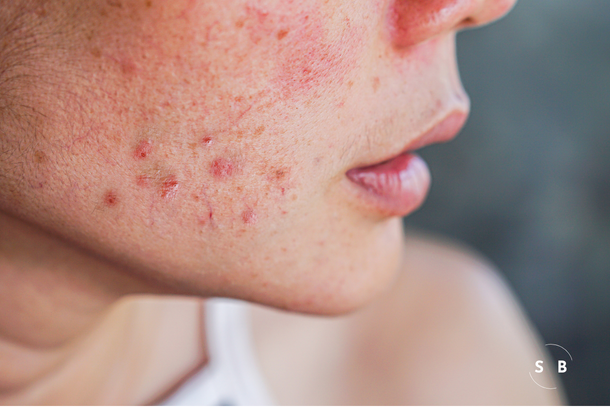
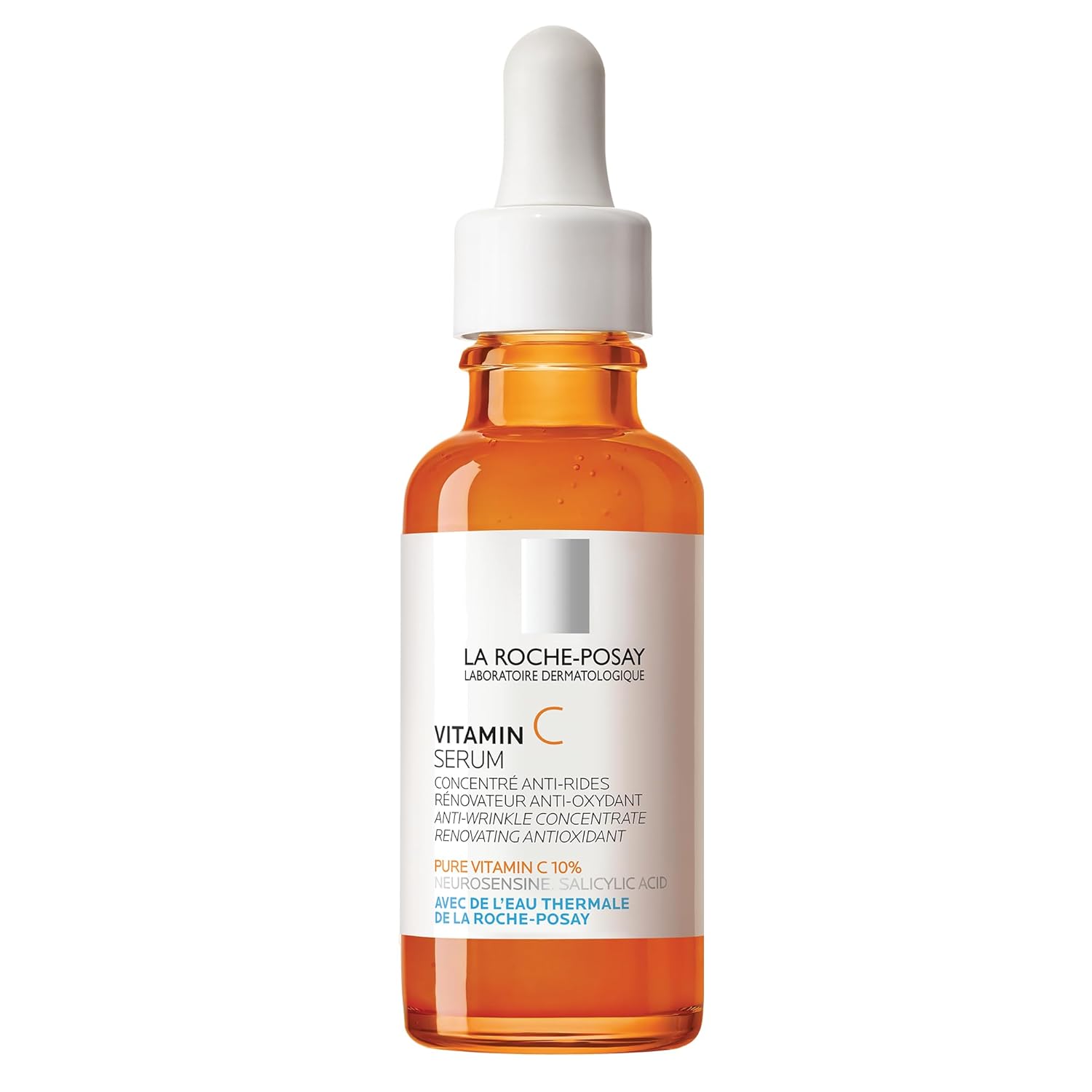
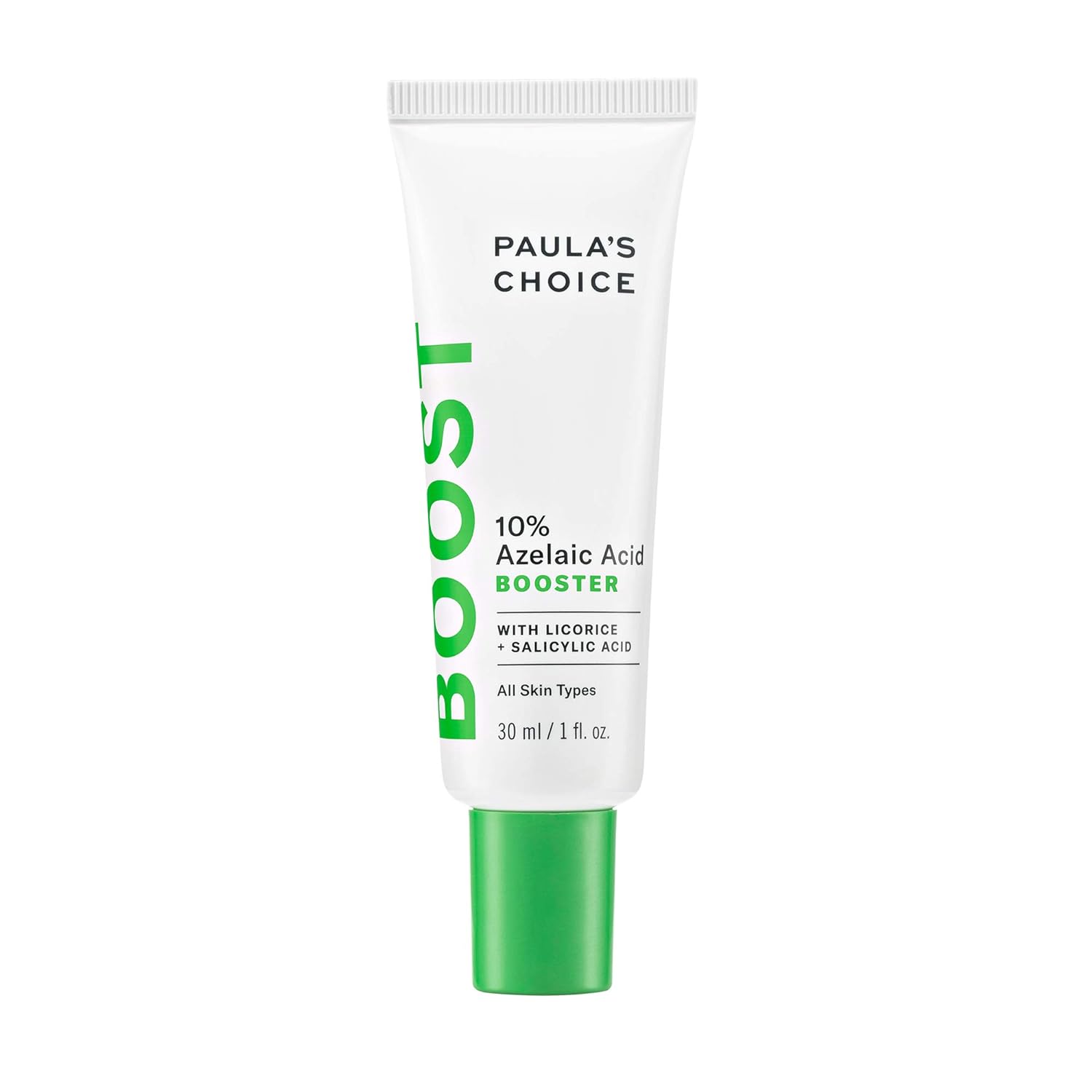
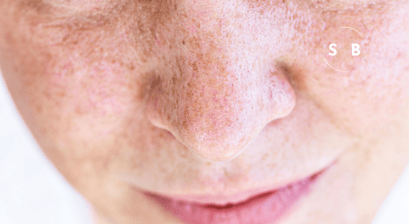

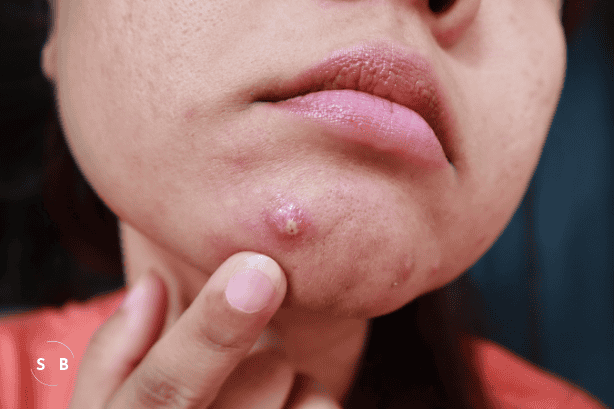
Leave a Reply